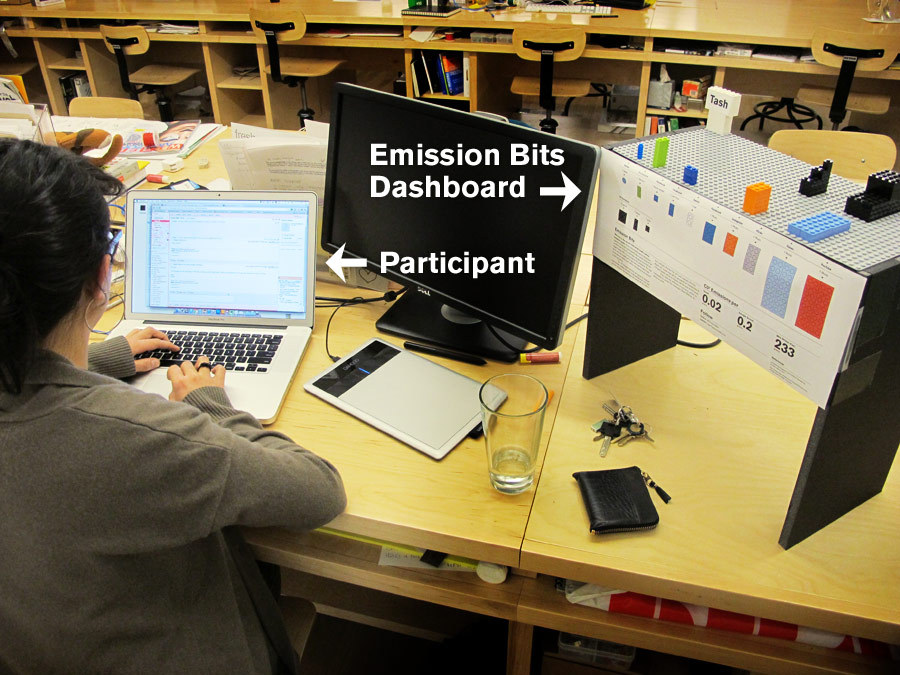
After a week of user tracking and documenting, I’m at the halfway mark testing out my Emission Bits prototype. I’ve got into the daily routine of logging all the user behaviors and updating their dashboards first thing in the morning. For the remote testing, I set up an opt-in Tumblr blog and Twitter feed so participants can follow their own and others’ statistics. The prototype is going really well, but am finding that keeping all the data up-to-date is terribly time instensive.
For the second week of testing, I’m trying out a few different approaches with individual users:
- Tash (User 1) will receive an SMS everytime she checks-in at a location on Foursquare, alerting her of the CO2 emissions of that behavior. I chose Foursquare as it is her most active social media account, even though it has one of the lowest totals of CO2 emissions.
- Cooper (User 3) will receive an SMS at the end of the day summarizing the total CO2 emissions of all his daily social media activity.
- Jess (User 5) will receive an SMS everytime she takes a photo with Instagram stating, “The Instagram photo you just took released 17 grams of CO2 into the air. That’s the same as driving 1/13th of a mile!” (I’m trying out comparisions to behaviors that we all can relate to).
- All participants must subscribe to the Twitter feed, updated once a day with running totals.
With Emission Bits, I’m tracking a running total output of social media behavior and subsequent CO2 emissions. In different approach (if given the time), I should test for limiting behaviors. Right now, there are no ceilings for how much one can use Twitter or Facebook. However, setting a fixed allowance that a participant may use for the week, say, “Only 10 tweets per week”, would hypothetically result in different behaviors.
Both approaches are very different, but valid, and can inform how I choose to build key interactions later in the design process.
Followed for SCIENCE with LEGO!
(via mattsbrickgallery)
black1327 reblogged this from mattsbrickgallery
black1327 liked this
kooooon reblogged this from svathesis
psychesexual liked this
jaydeeeee liked this
mattsbrickgallery reblogged this from svathesis and added:
Followed for SCIENCE with LEGO!
svathesis posted this